Thats a wrap on TowerXchange Europe 24
What an impressive venue for an equally impressive collection of the industry’s brightest and best. We leave motivated inspired and better connected.
#proudlydelmecteam #towerxchange
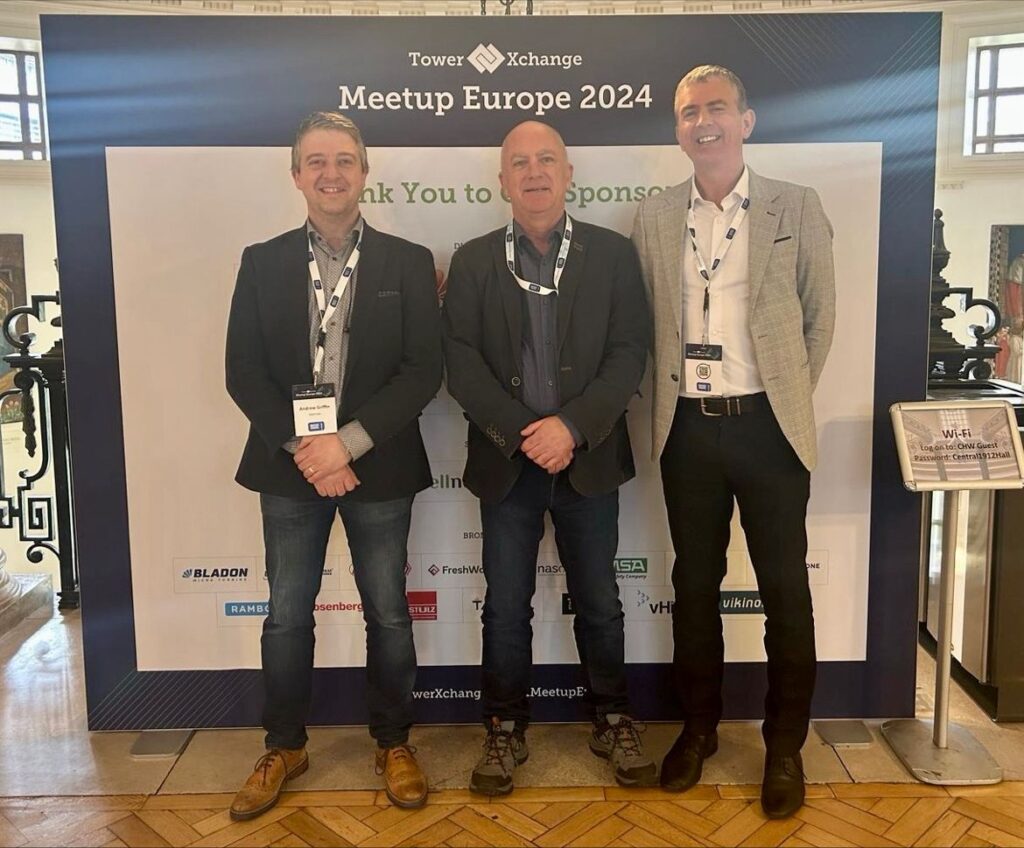
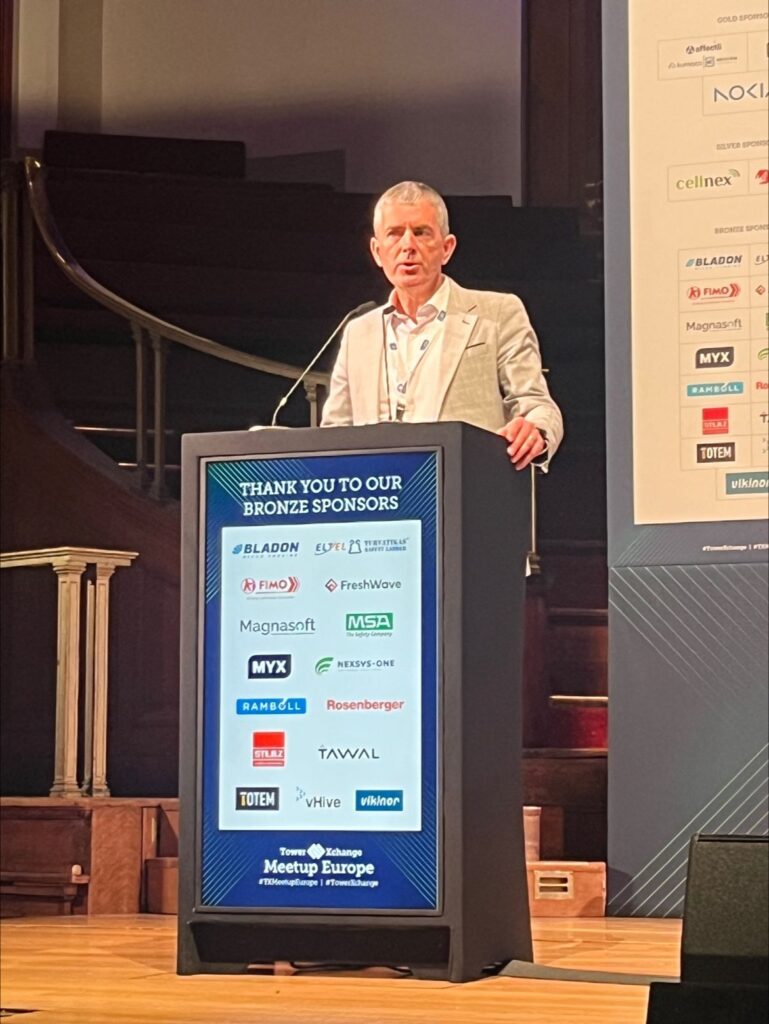
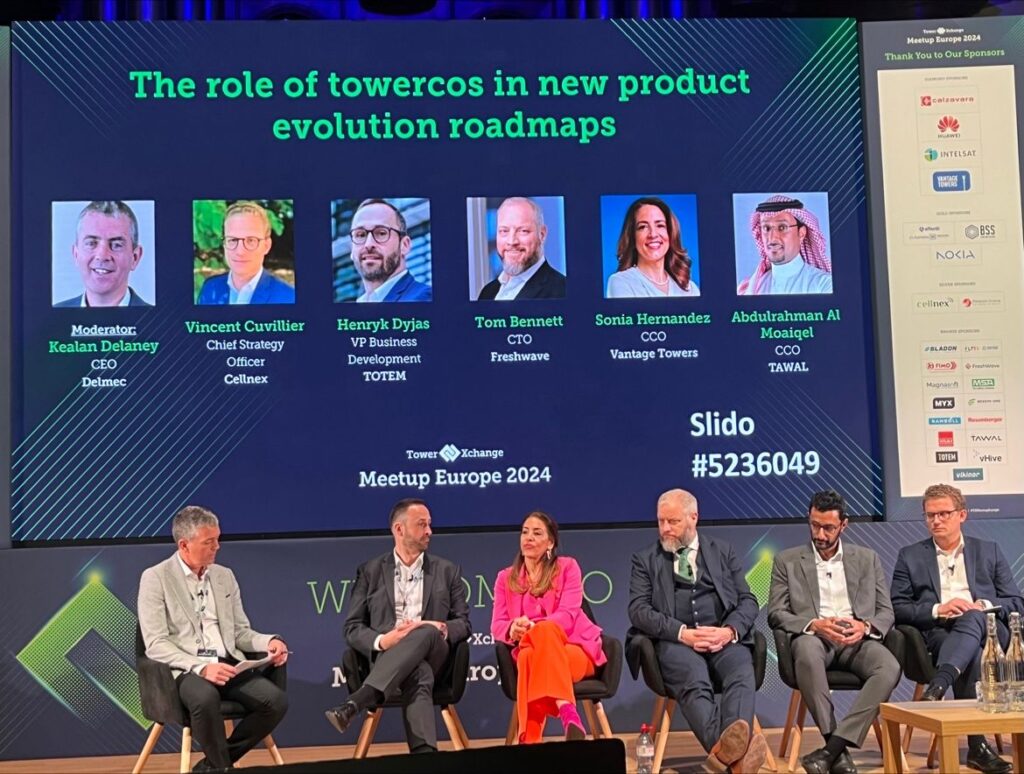

Thats a wrap on TowerXchange Europe 24
What an impressive venue for an equally impressive collection of the industry’s brightest and best. We leave motivated inspired and better connected.
#proudlydelmecteam #towerxchange



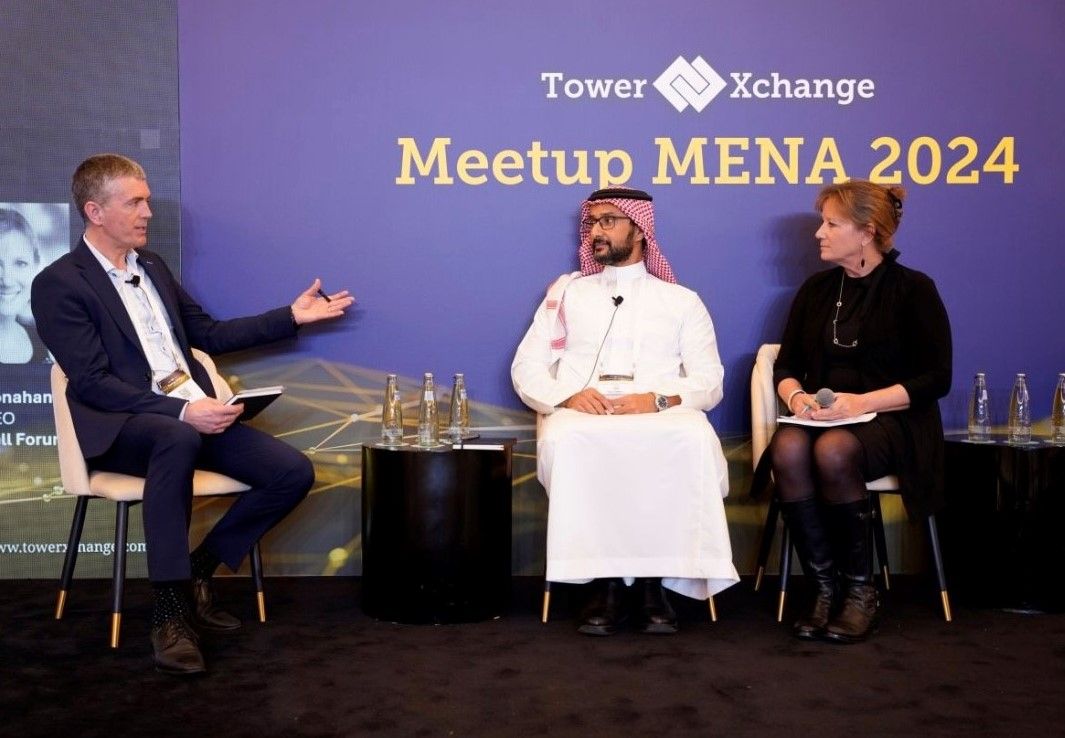
The Delmec team had an incredible experience at TowerXchange MENA 2024, where we had the opportunity to showcase our innovative solutions for Smart Cities and building connected ecosystems. Our CEO, Kealan Delaney, took the stage to present Delmec’s cutting-edge offerings and was also a key panelist in discussions revolving around the same theme. But that’s not all! Our team actively engaged in roundtable discussions with TowerCo’s, industry experts, diving deep into topics such as Smart Cities, IBS, the rollout of 5G, and alternative energy solutions. These conversations provided invaluable insights and opportunities for collaboration, further solidifying Delmec’s position at the forefront of technological advancements in the industry. We’re immensely proud of our team’s contributions and grateful for the enriching experiences shared at TowerXchange MENA 2024. Here’s to forging ahead with innovation, collaboration, and a shared vision for a connected future! #TowerXchangeMENA #SmartCities #5G #Innovation #Collaboration #ConnectedFuture #DelmecTeam #TowerCo’s
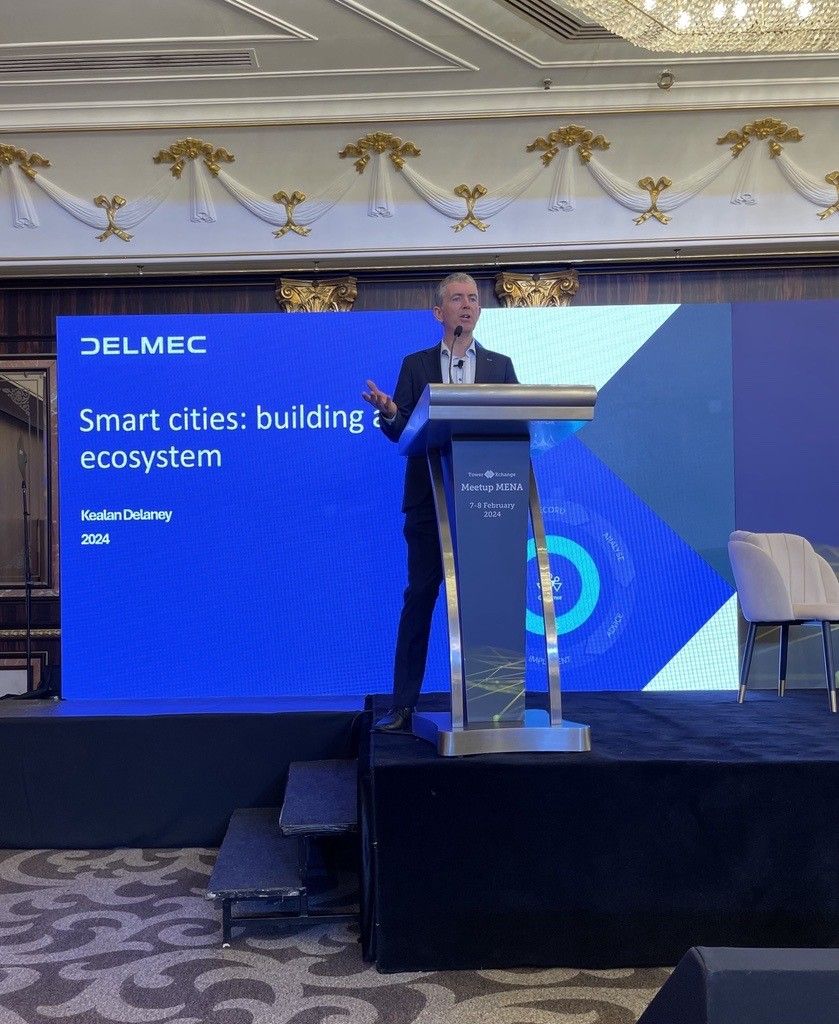
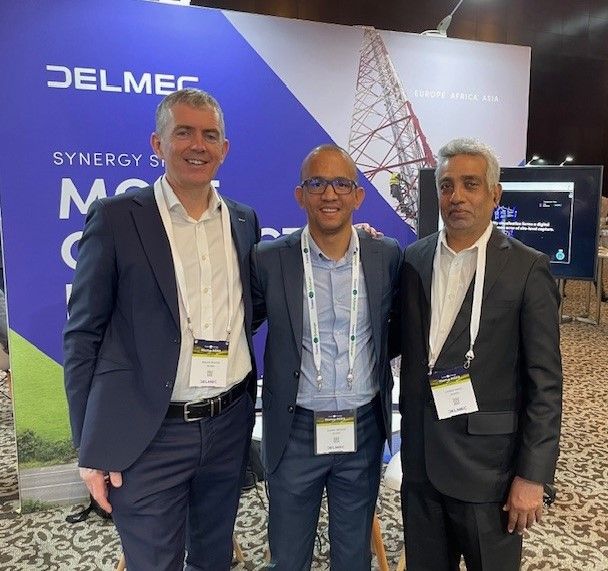

Mobile broadband (3G or 4G) coverage in the developed world is now almost global. The MENA region has a population of almost 440 million people, with 34% residing in rural regions. In 2021, the number of mobile internet users in MENA surpassed 300 million, with penetration expected to reach 50% by the end of 2022. Although the MENA area has the highest concentration of mobile internet users, poor take-up rates elsewhere highlight the work that still must be done to link offline populations. This is mostly due to economics:
Rural and suburban areas are less densely populated and normally residents have lower income, resulting in lower demand and challenging ARPU.
At the same time, sites in rural areas are more expensive to deploy, due to the lack or poor condition of infrastructures, ie roads and/or electrification, more costly to run, having to factor in the need for security and an alternative source of energy (gen-set or renewables) and related refueling/maintenance scope.
Access to communication services is required for rural people to be included in modern society and improve their quality of life. However, current business models must be modified in order to effectively connect rural and distant areas. Based on profitability, even allowing an extended time period for the calculation of each site ROI, an MNO would probably not embark on rural deployment. The increase in revenue would not justify the investment.
At Delmec we regularly question the feasibility of adopting a variety of business models, and this time we focused on rural site solution and profitability. We queried numerous Telecom operators and Towerco’s around the MENA region, and Delmec received pretty consistent feedback. The common response is that it is difficult to implement without the backing of the Telecom Regulatory Authority (TRA)
Sites in rural areas are required primarily as part of the Operator’s mandatory coverage licensing agreement. According to TRA regulations, rural sites must be built as comprehensive telecom sites. Most of the time, the sharing model is not feasible in those locations, and the operator will normally implement the site matching the single tenant requirements. This is because network providers are looking into ways to minimize overall site costs, such as reducing plot dimensions, picking cheaper land rent, and using lightweight structures.
Most of the time sites are built in rural areas having challenges in implementation due to location.
Implementing sites in rural areas is challenging in MENA for several factors:
To ensure an adequate return on investment (RoI), capital (CapEx) and operating costs (OpEx) must be lowered to a minimum in order to enhance network coverage in rural areas in a sustainable manner.
The conventional method of deploying macro-sites which provide broad coverage, but require substantial upfront cost is not always optimal for covering most of the rural areas with widely distributed residential districts and low population density.
In this specific case, operators can achieve far better results by combining lightweight/low-cost infrastructure and detailed population mapping of distant communities without mobile service. This may enhance the ROI of network development while making the case for connecting remote areas more appealing. The decision between using macro-sites or lightweight infrastructure is always best dependent on the population distribution of the area in question – in some cases, including a large area is more beneficial, while in others, focused coverage in specific locations is more effective.
According to the discussions Delmec had with telecom operators, if sites could generate significant traffic income, the revenue-sharing model could be applied.
At Delmec we are always looking into all possible solutions to help our customers to extend their service across their markets. Depending on conditions e.g. population distribution, the terrain, and the existing coverage footprint, MNO can decide to deploy lightweight low band only solutions (frequencies <1Ghz or coordinate with competition to invest in a (low-cost) shared standard macro site.
To support these 2 possible scenarios, Delmec is looking into two solutions:
1. “Site in the BOX” – a low-cost/minimum footprint design. This can be deployed into low-density population areas where the traditional macro site would not be profitable but still enable expansion of existing network coverage.
2. Low capex Marco site solutions: a stripped-down approach of the standard macro site, designed for multiple tenancies to broaden coverage. This type of site envisages the use of guyed structures, and hybrid power systems not anymore designed for worst-case scenarios, but dimensioned for the average case, and availability on a best-effort approach
A complete set of our solutions for rural locations that meet various criteria:
As a result, when combined with diligent site location analysis, “Site in the BOX” or Macro site solution can be an appealing solution for operators looking to expand coverage and income in rural areas while also providing mobile internet access to underserved populations.
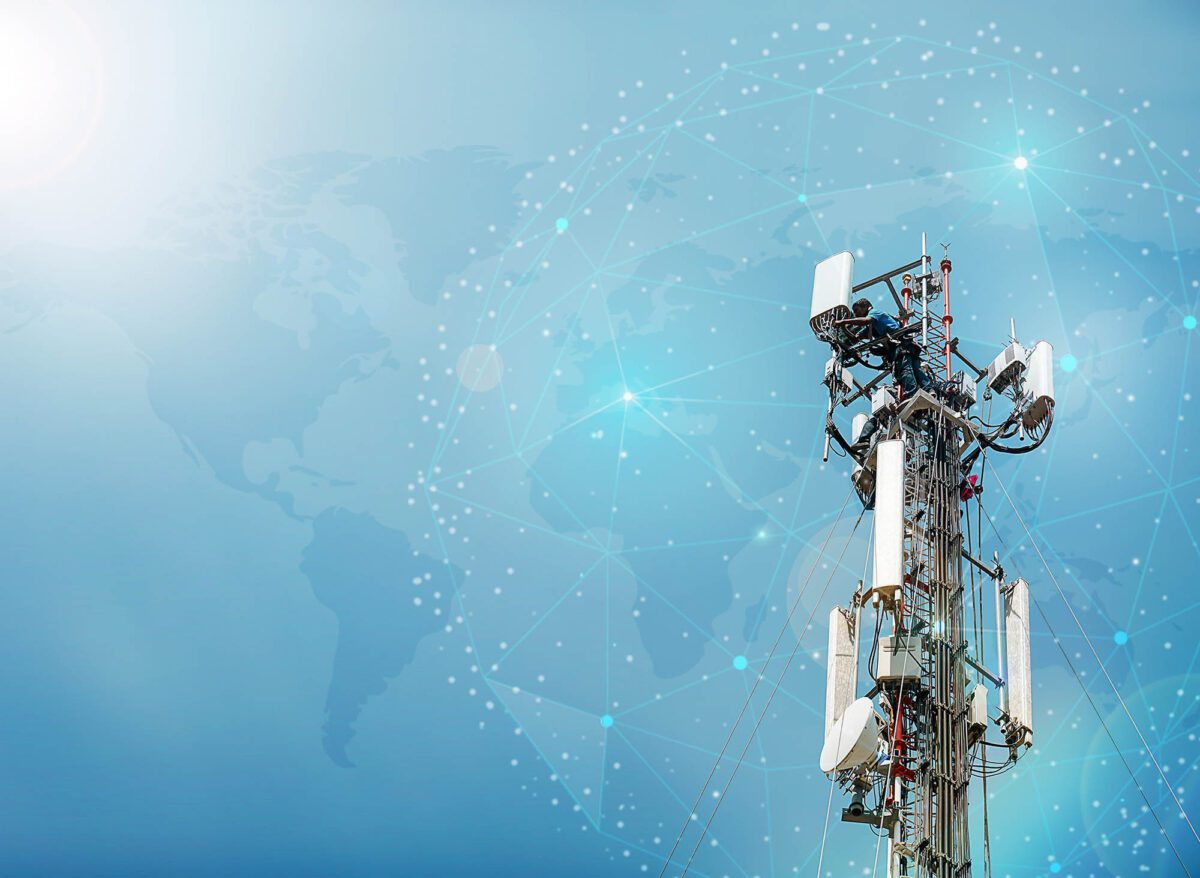
A couple of years ago I found myself in a local cab, bumping along in Nairobi’s noisy traffic. Like most taxi operators, my driver was happy to chat — to me in the backseat and to his family on his phone. He flicked back and forth between kids’ smiles on Facetime, the flickering lines of Google Maps, and the regular beeps of incoming fares.
When we reached our destination and I began counting Kenya Shillings, he passed his vibrating phone back to me. “Just tap,” he said. “It’ll be easier.” Such technology wasn’t widely used in Irish taxis yet, so I asked him about it. “My phone is my life,” he explained. “My family, my job, my income, my travel, my bank, my school, my everything — it’s all in there.”
Getting out of the car, blinking into the blinding sun, I realised that this is what we do. All the meetings I attend, the plans we draft, the towers we build and the clients we serve — it’s all for people like my taxi driver, so that he can access the world from the palm of his hand.
Connecting communities
Interestingly, much of our work tends to take place in very different environments. We’re often to be found developing streetworks in major cities to expand networks or overseeing the construction of towers in rural settings to tackle blackspots. All of our work is rewarding, but we’re particularly heartened when we play a part in bringing internet access to a new town or village in Europe, Africa or Asia.
This has so many potential benefits. It can reinvigorate rural communities; bring more educational facilities to remote students; offer new employment and business opportunities to low-income areas; and help families separated by distance to stay connected to their loved ones and their cultures.
Pandemic pressures
The need for this kind of connectivity became more acute than ever three years ago. Remember binge-watching Succession in March 2020? You weren’t alone: in fact, internet usage rose by a staggering 70% worldwide in the early days of the COVID-19 pandemic.
It wasn’t just about TV, either. Researchers from Digital Planet found that greater access to high-speed internet actually reduced COVID-19 deaths in the US, saying that “the internet may have been even more important in the pandemic than initially understood — for some, it was literally a matter of life and death.” This, Bloomberg says, “underscores the importance of digital connectivity for public health.”
This makes me all the more proud of my Delmec teams — scattered all over the world, they rose to the immense challenge facing them and played a vital role in keeping the world turning.
Access for everyone
This period taught me that telecommunications is a little like plumbing. It’s a highly complex system that operates quietly in the background, barely noticed while it works well. It’s only in times of pressure, when a pipe bursts or a network gets overloaded, that we realise how crucial such infrastructure is to our modern way of life — and what a mess we’re in if it’s fails.
Sometimes I need to remind myself of this, especially when I’m on my way to the airport in the wee hours, catching a flight to some far-flung site. It’s in those times that I think of my taxi driver in Nairobi, and remember the purpose behind our work. It’s about connecting people, families, communities, and even entire countries — and for me, that’s reason enough to bounce out of bed every morning and get to work.
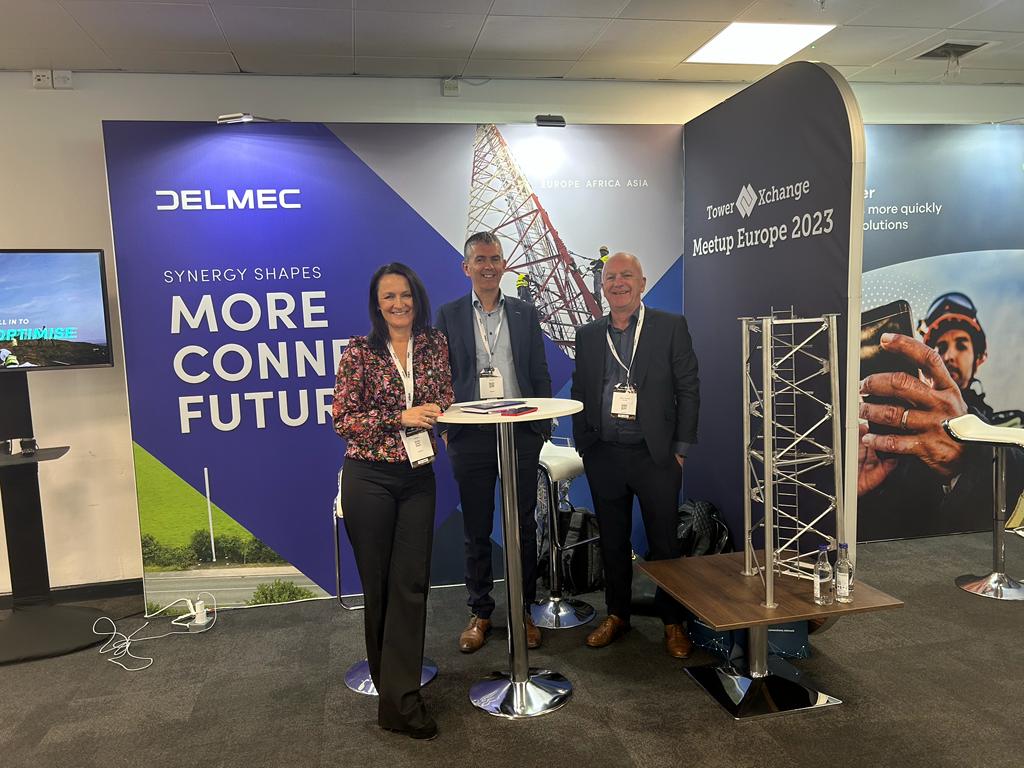
This year’s TowerXchange Europe saw the team stay close to home, with a quick trip across the Irish Sea to London.
The annual Meetup welcomed all the leading figures in the region’s industry, including MNOs, towercos, investors, regulators and suppliers. Although it is the second such event since the pandemic, it was for many the first time back in a room with close colleagues from neighbouring countries. “I missed the last Meetup in 2022,” says Delmec CEO Kealan Delaney. “So it was really great to see old friends, including participants from the main towercos Cellnex and Vantage.”
Discussions ranged from various project updates to digitisation and the ever-relevant streetworks. The team shared many learnings, and came home with a lot to think about, much of which they summarised here.
A fast-moving market
“The towerco market in Europe is reasonably new,” points out Orla Kane, Chief Commercial Officer, who was part of the Delmec team in attendance. “Most of the major players — Cellnex, Vantage, GD Towers, PTI and ATC — are new to the region or the result of consolidating assets.”
This led to a certain ‘back to basics’ approach to the Meetup, in which discussions centred on build-to-suit (BTS), co-locations and managing the value of assets. “Cost savings and efficiencies are evidently important,” says Orla. “For some of the participants, moving into active products seems inevitable, while others are more focused on building the core.”
Kealan Delaney agrees: “The big priorities are building more sites to generate revenue as well as developing more co-locations.” Central and Eastern Europe was heralded as the “next market” although it was acknowledged that it has a higher risk profile than Western Europe.
Future focus on ESG
Environmental, social, governance (ESG) strategy and the use of green energy were also part of the agenda, not least because of their association with efficiency. For example, Vantage have developed their first wooden tower, with plans for more.
“Cellnex spoke about ESG underpinning the base of connectivity,” recalls Orla. “Community criteria for investment is very much evaluated against ESG requirements with stringent reporting needs. We wondered if perhaps there is a role for TowerXchange to work with towercos, i.e., compiling information and standardising KPIs?”
While this remains to be seen, it was clear to all participants that ESG will play a major role in towerco activity in the region for years to come.
The fading appeal of digitisation
Once the leading topic during many TowerXchange events, it seems that the development of digitisation has been put on the back burner for now.
“Digitisation is great as a concept,” points out David Kilbride, Senior Key Account Manager at Delmec. “But it lacks industry direction and full end-to-end management of sites, assets and inventory.”
He believes digitisation will likely reappear and gain a foothold again when the industry matures, but for now it needs standardisation (and buy-in) to make it a reality. As part of a topic titled ‘Europe’s Digital Decade’, participants looked at not just digitisation, but also the associated IoT, sensors, drone nests and edge computing. It was obvious, though, that the appetite for its development had waned.
“Everyone seemed somewhat jaded when it came to digitisation,” Kealan agrees. “For now, it’s probably wise to limit its use to projects which demonstrate an immediate payback.”
Streetworks a continuing priority
A key part of Delmec’s services, streetworks continue to be a major focus within (and without) the towerco world. During a roundtable discussion, participants discussed how to build a business case around streetworks that would make it easier to sell the product to MNOs. Other opportunities in the area were also suggested, including rooftop replacements and the contribution streetworks can make to the development of smart cities of the future.
“While the need for streetworks is clear, ongoing challenges remain as roadblocks to progress,” Kealan says. “These include ownership of the proposed site; issues with existing client contracts; MNOs’ reluctance to share equipment; and a certain mindset around the project that hinders growth in the area.”
Current projects were discussed at length, in particular new efforts to connect the Czech Republic and Germany, which may give rise to further innovative streetworks solutions.
Every discussion demonstrated how integral Delmec’s role is in the region’s growth. “It was a great opportunity to build and enhance our relationship with key stakeholders and decision makers in the European market,” says David. “It was evident from all our interactions that Delmec is seen as a solutions generator, not just a run-of-the-mill service provider.”
“That’s what sets us apart,” agrees Kealan. “It’s our ability to build on previous experience, draw on our current knowledge and innovate new solutions to future challenges.” Delmec is here for the long-haul, helping to support new and existing clients and shape a new industry from the ground up.
“It’s exactly the same service we offer all around the world, it’s just nice to do it in our own backyard for once!” laughs Kealan. “It all helps to keep the airmiles down!”
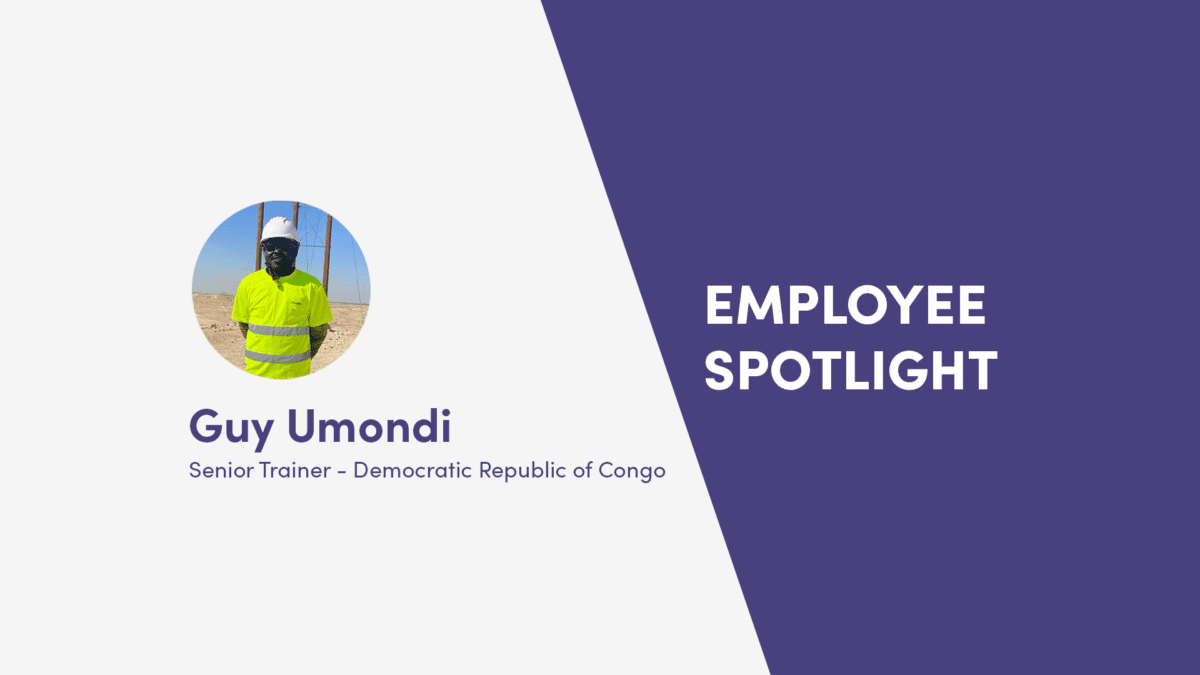
For this latest instalment of our #TalentedTeamwork series, we meet Guy Umondi, who has been a Senior Trainer with Delmec in the Democratic Republic of Congo for seven years. In that time he’s visited 11 countries, learning much about his industry and colleagues along the way. Today, he tells us about the parts of his job he enjoys most — and his twin passion for motorbikes and farming!
A big part of Delmec’s operations in the Democratic Republic of Congo is centred around training. With the ongoing expansion and upgrading of telecommunications in the region, there is always a need for new members of our team. This is where senior trainers like Guy Umondi come in, generously sharing their invaluable experience and skilled expertise. “I enjoy developing careers,” he says. “For me, it’s bigger than training: it’s about helping people shift their paradigm, learn to love their job and really master their role.”
Guy’s work is incredibly important in standardising our training and certification processes, ensuring that every person on site is working to proven guidelines established by Delmec. “Today, for example, I’m delivering training in Nigeria but also working on drafting a training manual,” Guy points out. “By developing our team’s skills, expanding their knowledge and cultivating a professional, quality-first approach, we can be secure in our promise to our clients that things will be done the right way. It makes me proud when we can provide innovative solutions to their most pressing challenges.”
The trip to Nigeria is far from Guy’s only one in recent months: he’s been to 11 countries and counting on behalf of Delmec. “I enjoy meeting people from different cultures,” he says. “I find it very interesting and enriching to learn with people and develop new relationships.” He has always found himself warmly welcomed by Delmec colleagues, clients and customers: “It doesn’t matter where I am, people are always so kind and open to me. I really love it.”
When he’s not delivering Delmec training, Guy likes to hit the open road on two wheels — with his beloved power motorbike. He’s also turned his attention recently to growing his own food, discovering a new passion for farming. “My dream is to one day become one of the biggest food suppliers in my country,” he says.
Although they might sound unrelated, Guy sees clear parallels between farming and engineering: “While I like to joke around, I am very principled in how I approach my work,” he says. “I refuse to compromise on quality, whether that means taking the time to properly nourish and prepare the soil on my land, or to train and develop my colleagues in the Delmec DRC office — it all leads to a better result for everybody involved.”
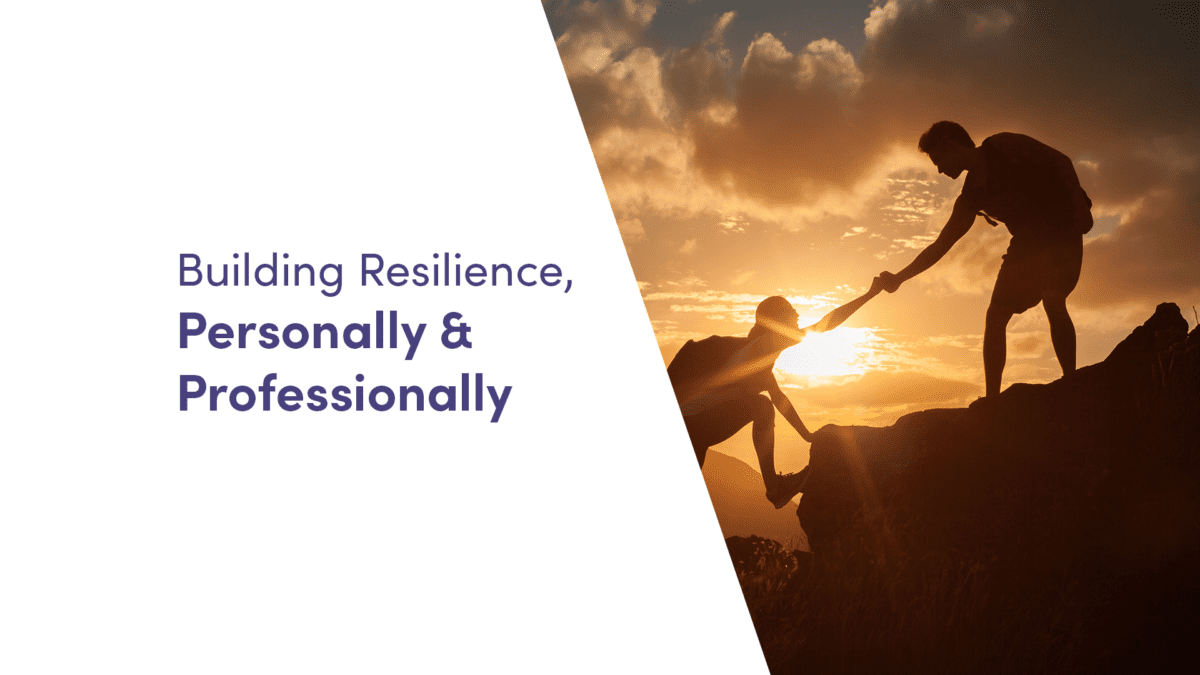
Resilience is a word we’ve all heard a lot over the last three years. It’s a certain toughness, a capacity to manage and adapt to difficult situations. It’s what Forbes calls “the ability to bounce back from hardship, to learn rather than to give up, to bend rather than break.”
It’s also not a new concept to anybody who’s been in business for any length of time. Here in Delmec, resilience is part of our DNA, from the tough economic environment of the 1980s, through to the recession of the noughties, all the way to the pandemic of late.
Through it all, we’ve had to roll with the punches, meeting issues head-on, and embracing opportunities as they come. In that way, business isn’t that much different to life — and in my role as a CEO, there are few key steps I take to help make both more resilient.
A positive perspective
We all know that not every day is sunshine and roses. Some days go so thoroughly down the drain that it can be tempting to give it all up and walk away. But it’s important to bear in mind that tomorrow’s a new day, and there’s no limit on how many times you can start again.
That’s the type of positive perspective that I value in my life and work. We operate in some of the toughest environments in the world, including snow-capped mountains and dry desert sands. If we didn’t maintain a can-do attitude and a positive approach, we’d be in trouble pretty quickly. I’m lucky that the team we’ve built relishes challenges, and sees every task as an opportunity to think creatively. But their work requires a supportive environment, and that comes from the top down.
While I’m no Pollyanna, my role as a leader is to maintain an optimistic outlook where possible and, to paraphrase another Irishman, encourage my people to try again, fail again and fail better.
Strong communication
There’s a reason why our mantra at Delmec is ‘synergy shapes success’. It’s because we’ve always valued relationships, teamwork and the transformative power of collaboration. We work hard to keep communication flowing, even with disparate teams across multiple continents and countries.
It turns out, that’s a pretty good policy for lots of reasons, not least building resilience. Research from my alma mater Harvard Business School shows “that resilience is not purely an individual characteristic, but is also heavily enabled by strong relationships and networks. We can nurture and build our resilience through a wide variety of interactions with people in our personal and professional lives.”
Those relationships, for me, are vital. They encompass trusted colleagues, loyal clients, old friends, and of course, my wife and family. By talking issues through, we get to verbalise them, hear alternative viewpoints and work together to come up with solutions.
A willingness to learn
They say that curiosity keeps you young, and it’s certainly something I’ve found to be true. No two days are the same in my job, and there’s always something new to be learned — from my teams, my executive colleagues, and my clients and their customers. I don’t operate a linear, siloed approach to leadership — who wants to exist in a vacuum? Instead, I’m all ears.
That’s one of the reasons why we hired extra consultants this year, so that we can build new expertise and fresh insights into our established teams. We try to recruit a mixture of people with academic and practical backgrounds, so that we’re accessing the most cutting-edge knowledge as well as hard-earned experience in the field.
Whether it’s an innovative design, a new product on the market or a yet-to-be tested approach, there are usually any number of solutions to a problem, if we’re willing to be open to them. That understanding helps us pick ourselves up and start again, and again, until we’ve reached our goal.
Having said all that, it’d be wrong of me to say there’s a magic formula for building resilience. Some challenges in life and business are not easy to overcome, and grit can only take you so far. But it’s important to me that I try to put building blocks in place that’ll make it easy to tackle the issues as they come in a better, more productive way. More resilience can only benefit my personal and professional life — although I’m hoping we’ll have a quieter few years ahead!

For this edition of our popular #TalentedTeamwork series, we meet Nikola Erdelja, who has been a Technical Engineer in the Engineering and Innovation department at Delmec for five years. He recounts what first attracted him to the company, how much he enjoys travelling and meeting new people, and why you won’t find a cheese sandwich in his lunchbox!
Last year saw Delmec win awards from Deloitte and County Carlow Chamber for innovation in our field. These kinds of accolades are the result of hard work and dedication across the entire company, but some of our most exciting developments come from the Delmec Engineering and Innovation department. Technical Engineer Nikola Erdelja has been part of this dynamic team for more than five years.
Nikola first came across Delmec when he was looking for the right role after completing his education in structural engineering in Zagreb, Croatia. “I was searching for a job as a design engineer, and Delmec sounded like a good opportunity to improve my knowledge in steel design,” he recalls. “As it turns out, I gained so much more, including the opportunity to learn new things every day and participate in many different projects around the world.”
Of course, much of our international travel was paused for two years, but this year Nikola found himself back on the road again. His work took him to new places including Dakar, Senegal in April. “That was my first time visiting Africa,” he says. “It was a really interesting experience, and I enjoyed meeting many of the clients and colleagues I had previously only talked to remotely.”
Working closely with clients as a consultant on projects is a part of the job that Nikola relishes. “I like how Delmec is consistently growing, and I’m excited about the direction it’s going in,” he says. “Embarking on projects in Africa, Asia and Europe, opening new offices across the world and providing opportunities for employees to develop themselves is what makes it a special company.”
Nikola’s experience and expertise in infrastructure is in demand throughout our industry, and he’s been invited to participate in roundtable discussions at TowerXchange events. Like everyone in his team, he’s always keen to learn from clients and colleagues, staying ahead of the curve in a fast-moving industry. He also contributes white papers as part of his role, most recently on the important subject of wind and ice loading.
Asked for a little-known fact, Nikola shares with us a somewhat unusual aversion to a common comfort food. “I don’t like cheese,” he laughs. “I’m not allergic, just hate the taste!” Luckily here at Delmec, we welcome diversity, celebrating our cheese-loving and cheese-hating team members alike.
When he’s not at his desk, on a site or representing Delmec, Nikola likes to keep fit. “I like to run and play tennis,” he says. “Before we started working from home, we used to play football at Delmec’s HQ in Carlow and it was great fun — hopefully we can get together to have a kick-about again soon.”

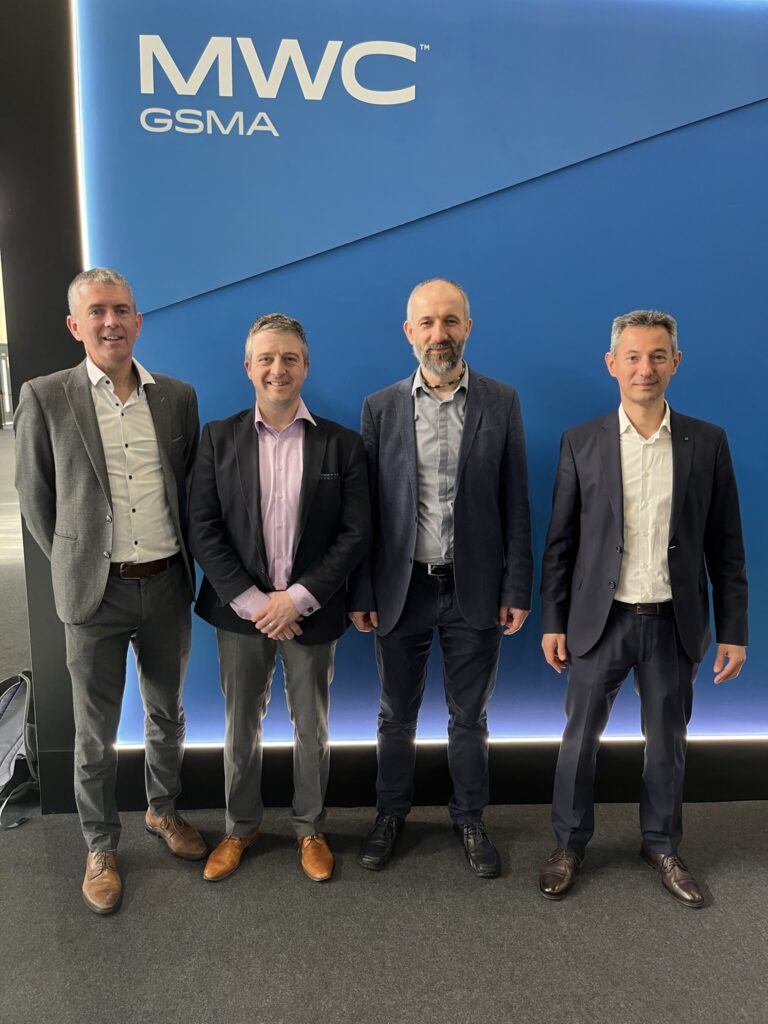
Delmec has always been a company that likes to get out into the world. While a lot of our work takes place behind computers, in front of drawings, or 30 metres in the air, we enjoy meeting new clients, colleagues and customers. Major telecommunications events such as the GSMA Mobile World Congress 2023 (MWC23) represent great opportunities for our team to engage with other industry stakeholders, learning their pain points, solutions and upcoming plans.
“MWC23 helps to keep Delmec at the forefront of developments in the future,” Delmec CEO Kealan Delaney says. “We get to see many emerging projects and cutting-edge concepts, which is an invaluable insight for us and our clients.”
The team travelled to Barcelona to attend the congress, welcomed by Senior Manager Spain Agustín Gómez Sáez, who was on hand to show his colleagues around his home city. They found GSMA 2023 busier than ever — the organisers’ first full-capacity event since the pandemic. “Halls were crowded, stands were flamboyantly dressed, and everyone was vying to show off what they had developed during lockdown,” recalls Head of Product Development Urban Solutions Andrew Griffin. “People were glad to meet face-to-face, shake hands and discuss our industry at length.”

Among the attendees were equipment vendors including Huawei, Ericsson, Nokia and ZTE, as well as antenna suppliers like Alpha-Wireless and Delmec clients such as Vodadone and Cellnex. “This is very much a home event for Cellnex, as their HQ is located less than 200m from the venue,” Andrew notes. “Their stand was a busy one, with suppliers and customers constantly coming and going.”
“Each year at MWC, there is a technology trend that catches our attention,” says Kealan. “Last year, that was Open RAN, and this year it was private 5G networks.” While Open RAN was still a feature for the smaller equipment vendors (and Vodafone, who demonstrated an interesting solution), private 5G was clearly the hot topic for most.
Multiple stands broadcasted their capabilities in this field, including hardware and software of varying types, as well as specific use cases and deployment strategies.
Among the antenna supplier stands there emerged a trend to assemble more equipment together on a structure, with a number of companies demonstrating 5G active antennas positioning behind passive antennas.
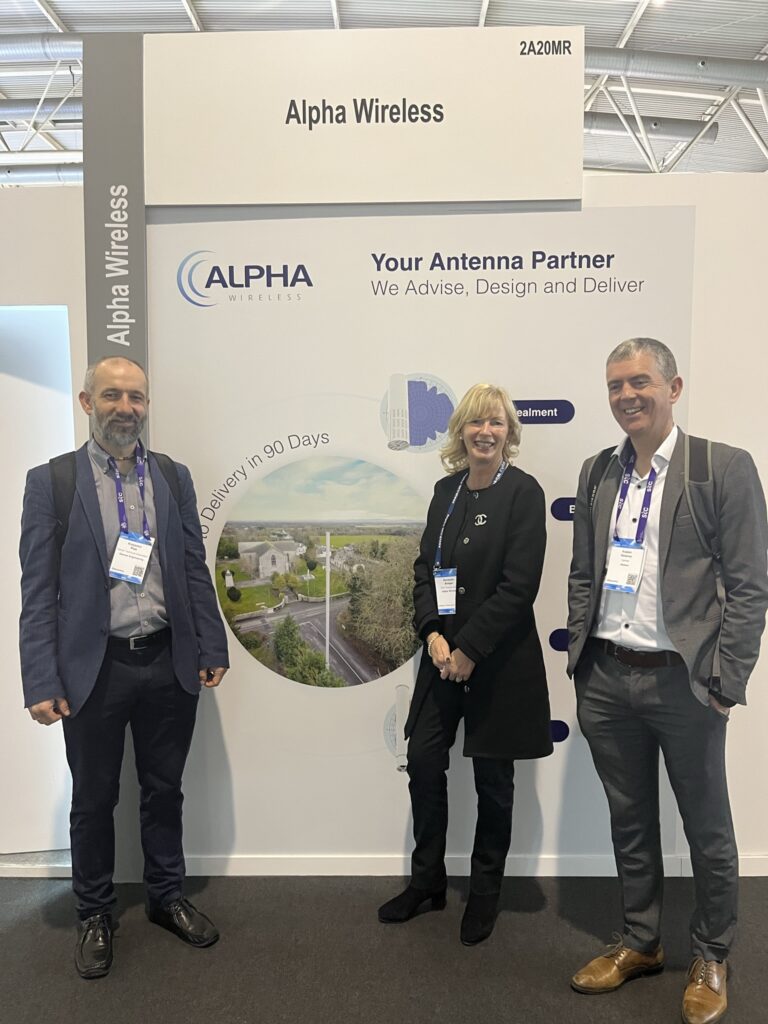
What this entails is a radio transparent passive antenna through which the active antenna can look. This allows installation of any vendor’s active antenna with that passive antenna; if two or more antennas can be incorporated into one case, the towerco may only have to pay for one space. It also means that the active or passive antenna can be swapped for maintenance reasons at a lower cost as only the items need to separate. However, the team did note that antenna assemblies are getting much larger and as such, will require more heavy duty connections to structures.
The Delmec team were quickly drawn to the Alpha Wireless stand, given our close relationship and ongoing collaboration. “We work together to develop innovative solutions for Cellnex Ireland,” Kealan says. “These include a site at Vicarstown, Co. Laois, and many more — all great examples of Irish companies coming together to connect our communities.”
Kealan and his team — including Senior Technical Consultant Krzysztof Ptak — concluded the event with much to think about. “It was a hectic few days, but a hugely valuable experience,” recalls Kealan. “As always, we were keen to share our experience and expertise, and also gain new insights and fresh knowledge. For example, we learned a great deal about new renewable power solutions, which are always of interest to our clients. As a result, we were able to bring loads back for our Telecoms Energy Consultant Natalia Kononovato review.”
“This is why we continue to take time out of our schedules, get on planes, and attend events like MWC23 — to constantly develop and improve our unique services, offering ever-advancing capabilities to our clients and increasing connectivity to their customers.”

In a nice touch of serendipity, Delmec and I are both celebrating the milestone of turning fifty. That half a century has treated us both well, but just as the company has to evolve and adapt for the future, so too does its CEO.
That means taking a look at my work / life balance to see if I can make adjustments to better focus on what really matters — and stay in shape for the next exciting decades to come.
A world of distractions
The New York Times recently interviewed writer Johann Hari, whose latest book, ‘Stolen Focus’ investigates “how our brains have been broken by technology.” He says we typically focus on a given task for just three minutes and we touch or check our phones more than 2,000 times every day, devoting at least three hours to staring at our screens.
While the jury’s out about who’s at fault — Big Tech or personal willpower? — the impact of this “attention crisis” is undeniable. At an executive level, it can negatively affect a leader’s ability to effectively strategise, plan and execute goals. For this reason as much as any others, I’m working hard this year to carve out time to think, rather than act. This might mean ringfencing deep focus slots in my schedule, minimising my digital use at home, or going for a run with my phone in airplane mode.
Lockdown lessons
While I normally travel a great deal as part of my work with Delmec, I was fortunate to spend the lockdown periods in my Carlow home, nestled in the Irish countryside. With no planes to catch or commutes to complete, I had more time to explore my surroundings with my family. When my schedule allowed, I often slipped out for a quick run by the River Barrow.
While it was a different time, the experience taught me that it’s okay to take the time to breathe in some fresh air, get the legs pumping and come back to the desk energised for the rest of the day. Now that our schedules have ramped up again, it’s easy to think a lunchtime run is no longer possible, but it is — I just have to keep my trainers within eyesight in the office.
Keeping fit for the future
When I was a younger man, I didn’t have to think about keeping fit — daily site visits and weekend sports took care of that. Now that I’m older, I’m aware that I have to put a bit of work into staying hale and hearty for years to come. Delmec is at an exciting stage in its trajectory, expanding into new markets, capabilities and opportunities. We’ve recently acquired FocusPlus, established a separate service (Del-Urban Streetworks Solutions), and tripled our operations over the last three years. The sense of promise in the company is tangible, and I’m determined to match my team’s energy, step by step, as we push forward into the exciting journey ahead.
I’m also conscious of enjoying every minute I can with my family, from kicking a ball around to taking hikes into the Carlow hills. You have to stay fit to keep up with a tireless teenager, and that’s motivation enough for me!
With all of this to consider, I’m making 2023 the year that I focus on getting the most out of my body and mind. And that starts with lacing up the running shoes again.